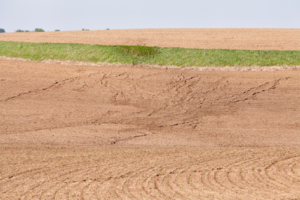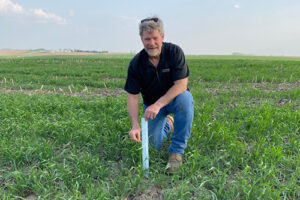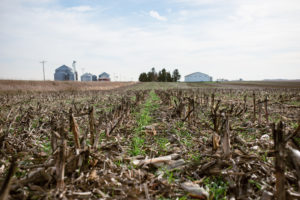By: 4R Plus
December 2018
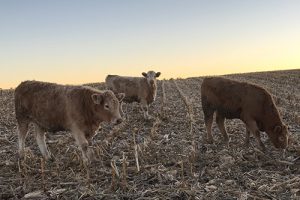
The gentle rolling hills of Dubuque County are the perfect setting for Tim Daly’s corn, soybean and cattle operation. This is where he’s focused on finding solutions to integrate his crop and livestock systems, improve the soil and achieve top-end yields. He knows he needs to be laser focused to reach these goals.
Soil conservation is not a new concept to Daly. In the late 1970s, along with his father, he learned about conservation tillage. By 1981, he planted his first 25 no-till corn acres into alfalfa. Since then he’s incorporated no-till and cover crops on all the ground he farms. He initially planted cover crops for a feed source for his cattle and is pleased with the added soil health benefits.
Daly is encouraged with the economic benefits of grazing cover crops. “I determined what I was saving in feed costs for the three weeks the cattle were grazing more than paid for the cost of seeding the cover crop,” he said. “You also have to keep in mind the equipment, electricity and fuel savings. I don’t haul manure while the animals are in the fields.”
“The cattle are also picking up corn that my combine missed so I don’t deal with volunteer corn,” adds Daly. “I think this system produces the perfect seedbed in the spring. I don’t have a lot of residue from the previous year’s crop trapping moisture in the spring, so my ground dries out more quickly and then holds water better during the growing season.”
He prefers a mix of oats, rye and radishes for his cover crop seed mix. “The quick growth of the oats provides a feed source for the grazing cattle, the radishes help with soil compaction and the rye comes up strong in the spring to help with erosion,” Daly said.
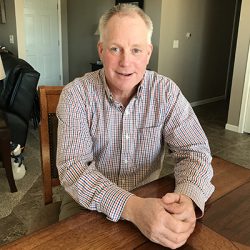
Daly knows he’s being watched. He was one of the first in his neighborhood to plant cover crops and farmers are asking questions because they see his success. “I tell people to start with just a few acres like I did and build cover crop acres from there,” he said. “You also need to have the mindset to make it work. I want to improve soil productivity, so I’m determined.”
He also answers questions about how he achieves top-end yields in his no-till system. “I tell people it’s a myth that yields suffer in a no-till seedbed,” Daly said. “I tell them I don’t want my yields to go backwards and they haven’t. I do an extensive year-end review with my crop adviser to make sure my yields are in the top 10 percent for this area, and each year I’m assured my goal is achieved.”
Daly’s adviser, Jeff McDowell of Innovative Ag Services in Manchester, enjoys working with him because of his forward-thinking mindset. “He is determined to make these practices work and he’s seeing the benefits of improved soil health, reduced erosion and top-end yields,” McDowell said.
He also said interest in cover crops and reduced tillage methods are gaining popularity among the farmers he works with. “To be successful with a new practice you need to be patient and ask a lot of questions,” McDowell said. “Farmers that use no-till might have to wait a little longer for the soil to warm up before they plant, but it’s worth it for those interested in improving soil health.”
“In the long run I know what I am doing is improving soil health for the longevity of this farm,” said Daly. “It’s encouraging for me to do what’s right for the soil and maintain a high level of productivity.”

